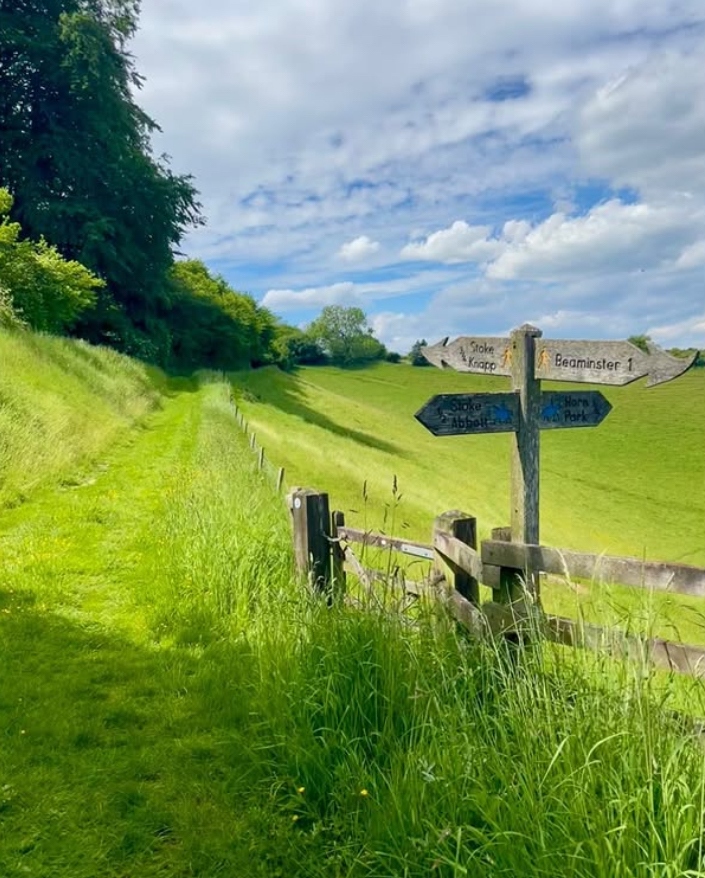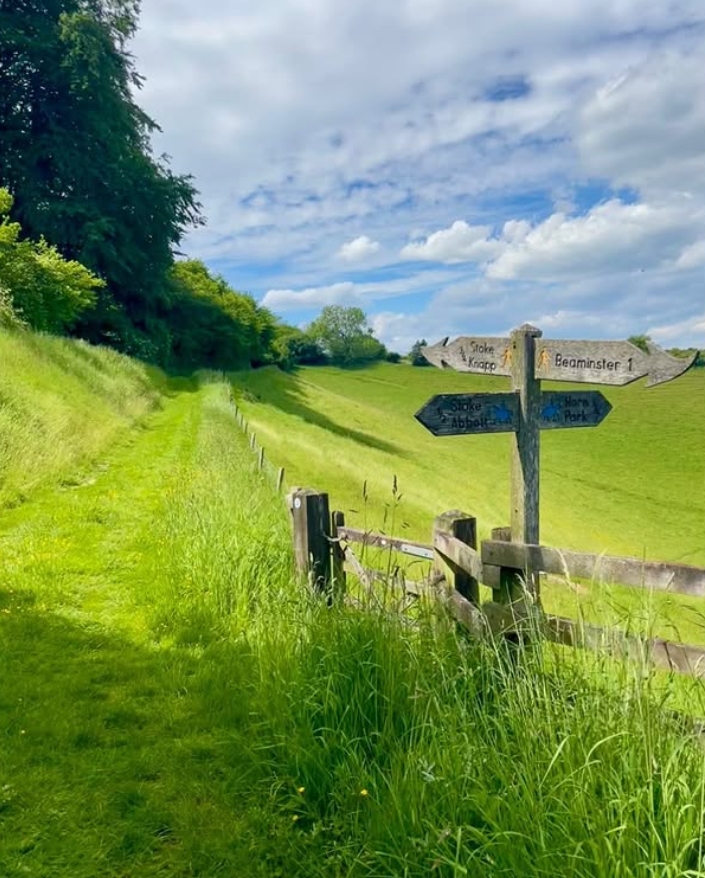Dorset’s ancient trails wind through the Area of Outstanding Natural Beauty (AONB), are steeped in history and shaped by millennia of human and natural forces.
These paths, often tracing Iron Age routes, Roman roads, and medieval byways, offer a connection to the past while showcasing the region’s inland and coastal splendor.
These trails aren’t just walks—they’re time machines. From Neolithic traders to Roman legions, their echoes linger in Dorset’s hills and valleys, ready for you to tread. Pick a path and step into the past!
Wessex Ridgeway
- History: This 136-mile trail (62 miles in Dorset) follows a prehistoric trading route across the chalk downs, used since the Neolithic era (4000 BCE). It’s dotted with Bronze Age barrows, Iron Age hillforts, and Roman remnants.
- Route: Starts at Lyme Regis and cuts inland through the Dorset Downs to Ashmore. Key stops include Maiden Castle near Dorchester—Britain’s largest Iron Age hillfort, built around 600 BCE—and Hambledon Hill, a fortified Neolithic site from 2800 BCE.
- Experience: A multi-day trek for the full route, but day hikes like the 8-mile Cerne Abbas loop (passing the Cerne Giant, a possibly ancient chalk figure) offer a taste. Expect open ridges, ancient earthworks, and sweeping views.
- Terrain: Chalky paths, some steep climbs—good boots and a map (OS Explorer 117) are essential.

Stour Valley Way
- History: This 64-mile riverside path traces the River Stour, a lifeline for prehistoric settlers, Iron Age tribes, and later Saxon villages. Its Dorset section echoes ancient trade and migration routes.
- Route: From Stourpaine to Hengistbury Head, with inland gems like the 6-mile loop near Sturminster Newton. Passes through Hod Hill, an Iron Age hillfort with Roman overlay, occupied around 800 BCE and later by the Romans in 43 CE.
- Experience: Flatter and gentler than the Ridgeway, it’s a peaceful wander past water meadows and historic mills. Look for ancient boundary stones and subtle earthworks.
- Terrain: Mostly level, but muddy after rain—waterproofs advised.
Hardy Way
- History: A 217-mile trail inspired by Thomas Hardy’s novels, it follows ancient drove roads and footpaths used by shepherds and traders since medieval times, some predating Roman influence.
- Route: Loops through the Blackmore Vale and Dorset Downs, linking Hardy’s “Wessex” sites like Shaftesbury (medieval Gold Hill) and Higher Bockhampton, near his birthplace. Ties into prehistoric sites like Maiden Castle.
- Experience: A literary pilgrimage with ancient roots—try the 10-mile stretch from Dorchester to Puddletown for heathlands and barrows. Hardy’s descriptions bring the old trails alive.
- Terrain: Rolling hills and woodland—moderate difficulty, with some boggy patches.
Purbeck Way (and Old Paths)
- History: This 27-mile route blends ancient tracks across the Purbeck Hills, used by Iron Age tribes and later quarrymen. It ties into the South West Coast Path, itself following prehistoric coastal routes.
- Route: From Wareham to Swanage or Chapman’s Pool, passing Corfe Castle—a Norman fortress on a Saxon site—and Nine Barrow Down, a Bronze Age burial ridge (1500 BCE).
- Experience: The 5-mile Corfe Castle to Swanage walk offers castle ruins, ancient barrows, and heathland. Shorter loops like the 3-mile Ridgeway Hill reveal Iron Age banks.
- Terrain: Hilly with chalk and clay—sturdy footwear needed, especially in wet seasons.
Practical Notes
- Navigation: Trails are waymarked (look for fingerposts or acorn symbols on the Coast Path), but OS maps (OL15 for Purbeck, 118 for Blackmore Vale) or apps like Outdooractive are handy.
- Access: Start points like Dorchester, Wareham, or Sturminster Newton have parking and bus links (Morebus or Damory).
- Seasonal Tips: Spring and autumn offer wildflowers or golden leaves enhance the ancient vibe. Winter can expose archaeology under bare trees, though mud slows you down.
- History Bonus: Many trails pass tumuli (burial mounds), flint scatters, and lynchets (medieval field terraces)—keep an eye out or join guided walks from Dorset Council or the National Trust.


